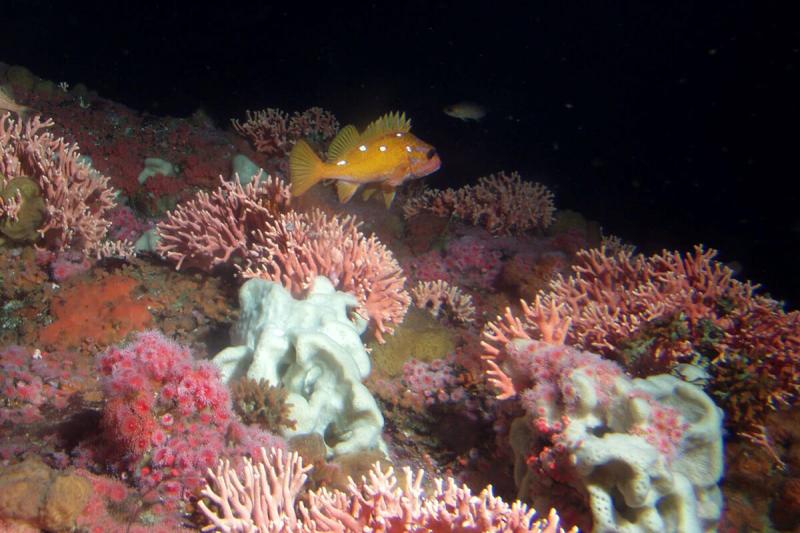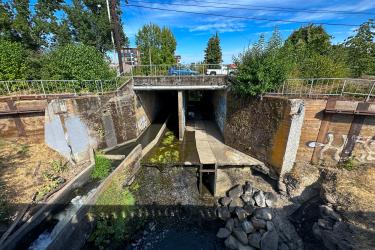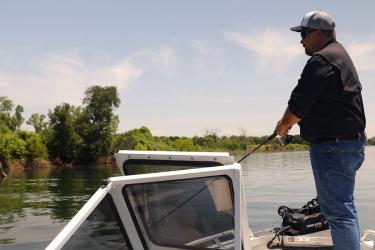Upcoming changes in fishery management regulations mark a milestone in the ongoing efforts to conserve and sustainably manage West Coast groundfish populations. The changes are outlined in an amendment to the Pacific Coast Groundfish Fishery Management Plan. They reflect more than two decades of conservation work and will benefit both commercial and recreational fisheries.
Effective January 1, 2024, Amendment 32 opens fishing areas that have been closed since the early 2000s to protect several species of overfished rockfish. With the successful rebuilding of nearly all these species, reopening these areas will provide fishermen with greater access to healthy groundfish stocks.
However, some conservation challenges persist. Certain areas will remain closed to continue protecting more vulnerable fish species, as well as protect critical groundfish habitats like rocky reefs, corals, and sponges.
“This milestone is a testament to the success of long-term conservation efforts, and reflects a shared commitment to responsibly steward our marine resources,” says Jen Quan, NOAA Fisheries West Coast Regional Administrator. “It marks a significant step toward a sustainable future for West Coast groundfish fisheries and the communities that rely on them.”
This action impacts groundfish closures that span about 1,000 nautical miles from Oregon’s northern border to Mexico.
Action Highlights
- Reopens part of the Non-Trawl Rockfish Conservation Area off California and Oregon, granting access to approximately 2,400 square miles of historically important fishing grounds that have been closed since 2002
- Removes Cowcod Conservation Area restrictions for non-trawl groundfish fisheries areas off southern California, opening roughly 4,600 square miles of historical fishing grounds to non-trawl groundfish commercial and recreational fisheries, previously closed since 2001
- Creates new closures to protect rebuilding yelloweye rockfish, groundfish essential fish habitat, and other sensitive areas, including abundant coral and sponges
Ocean Ecology and Rockfish
Groundfish play a vital role in West Coast marine ecosystems, serving as both predators and prey within marine food webs. Reproductive success in rockfish varies greatly from year to year and depends on highly variable ocean conditions. They have evolved to have long lifespans so that fish have several chances to reproduce. In some extreme cases, they may reach ages of 100 years or greater. With their slow growth rate, only a portion of the rockfish population are large enough to harvest at any given time. Their conservation is essential for maintaining ecological balance in these underwater environments.
The combination of overfishing in the 1980s and poor recruitment rates in the early 1990s led to the decline of many West Coast groundfish populations. In the early 2000s, large areas along the West Coast were set aside to promote the recovery of various species. The conservation areas allow fish stocks inside their boundaries to rebuild, and act as nurseries for rockfish along the entire West Coast.
“Rockfish young typically have a fairly broad dispersal,” says John Field, Supervisory Research Fish Biologist at NOAA’s Southwest Fisheries Science Center. “Rockfish that were protected in conservation areas contributed substantially to the increase in recruitment, abundance, and productivity outside of those closed areas. In addition, a lot of these trends in recruitment are environmentally driven, and shifts in ocean circulation and source waters are thought to be key drivers of recent increased productivity for many rockfish stocks.”
When cool waters from the Gulf of Alaska move south, bringing nutrients and lipid-rich northern plankton with them, rockfish recruitment rates trend upwards. In 1999 and the early 2000s, this helped fuel the rebuilding of stocks, with the support of the conservation areas. Conversely, when warm southern water comes northward, as in El Niño years, recruitment drops significantly, slowing recovery rates. The El Niño Southern Oscillation occurs roughly every 2 to 7 years.
More frequent groundfish surveys over the entire coastline have also improved the availability of data to support rockfish stock assessments over the past two decades. These surveys include assessments of environmental conditions as well as capturing and measuring individual fish. “By looking at the temperature and oxygen conditions in the water column, and shifting ocean conditions, we can paint a much more accurate picture of rockfish population health and how these populations respond to environmental variability,” says Field. Onboard observers who count the number and species of fish caught in commercial and recreational fisheries have also added to the accuracy of the stock assessments.
Commercial and Recreational Fisheries
These regulatory changes are expected to provide a significant boost to both commercial and recreational fisheries along the West Coast. The commercial groundfish fishery contributes more than $158 million annually to the economy, supporting coastal communities through processing plants, support service businesses, markets, and restaurants. The recreational groundfish fishery generates approximately $161 million annually, further benefiting local coastal economies through tourism, bait and tackle sales, and other related commerce.
"This action is important for hundreds of fishermen on the West Coast, as it will provide much-needed access and opportunity to fish for abundant groundfish stocks,” says Harrison Ibach, commercial fisherman in Eureka, California. “After decades of closure, it should be noted that gaining access into the Rockfish Conservation Area with specific hook and line gears is a milestone in sustainable fisheries management.”
NOAA Fisheries, along with the Pacific Fishery Management Council and state and tribal co-managers, manage the groundfish fisheries off of the West Coast. Through a public process involving stakeholders, the Council develops rules governing groundfish fisheries. NOAA Fisheries implements those rules about when and where commercial and recreational fisheries can fish, and how many groundfish they can catch, to make sure enough fish remain in the ocean to support current and future fishing.




